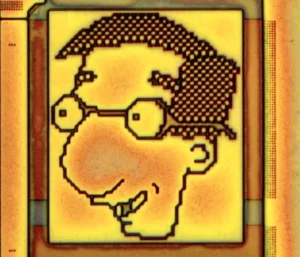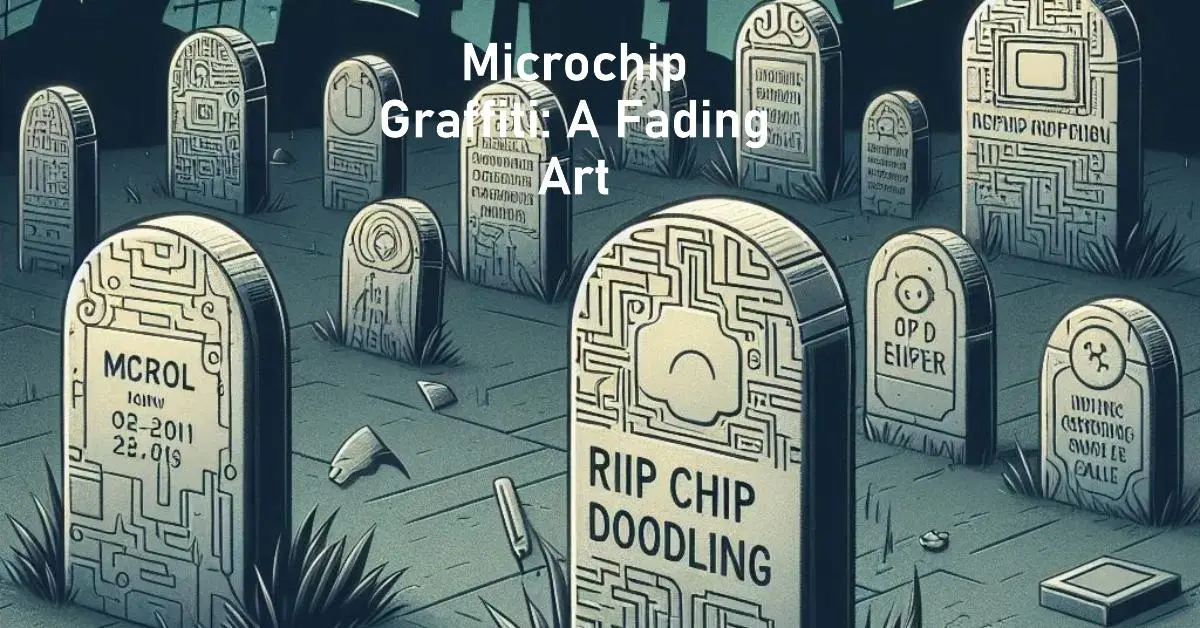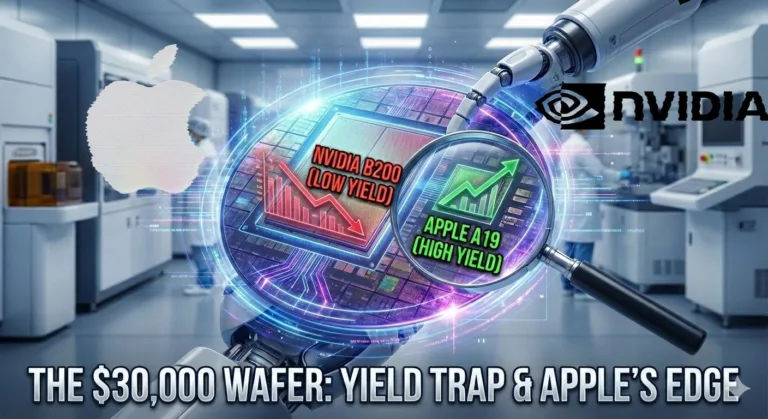You know those tiny microchips that power our computers, smartphones, and all sorts of electronics? Right… These little silicon wonders are actually the real marvels of engineering and technology. From the smartphones that you use to the rockets that take the satellites to the space , they are literally everywhere. But did you know there’s a secret world of art hidden within their intricate designs? It’s called silicon doodling or microchip graffiti, and it’s been a fascinating part of the semiconductor industry for decades. But now a days this art of microchip graffiti is fading. In this very article we will discuss about microchip graffiti or silicon doodling , from their origin to why are they fading?
Origin of Silicon Doodling.
Let’s rewind to the early days of microchip manufacturing. Back then, engineers and designers started leaving their mark – quite literally – on their creations through silicon doodling. They began incorporating small doodles, initials, and even complex drawings into the unused spaces of chip designs, creating intricate works of microchip graffiti. These miniature masterpieces were invisible to the naked eye and required a microscope to appreciate their intricate details and whimsical nature. But wait a question must be arising in your mind, but why Engineers used to incorporate these small doodles or initials on the chips.
The Motivations behind Microchip Graphitti: Signatures, Inside Jokes, and Tributes

So, why did engineers bother with this microscopic silicon doodling artistry? For some, microchip graffiti was a way to sign their work, leaving a personal mark on their creations in an industry where individual contributions often went unrecognized. Imagine spending countless hours designing and perfecting a chip, only to have your efforts lost in the anonymity of mass production. Microchip graffiti offered a way to etch one’s identity onto their work, like a tiny signature.
Others saw these unused spaces as a canvas for inside jokes, personal symbols, or even tributes to colleagues and loved ones through silicon doodling. It was a way to inject a bit of personality and humour into the otherwise clinical world of semiconductor design.
So , till now we understood what is silicon graffiti or Silicon Doodling and why Engineers used to incorporate these into their chip designs. And now there seems to be another question How were they etched on the silicon chip and Did it not incorporate and extra charges? Let us WireunWire it Bit by Bit.
The Intricate Process of Silicon Doodling
The process of creating microchip graffiti was like etching on a tiny scale. Designers would carefully draw their desired silicon doodle on a mask used in photolithography, allowing ultraviolet light to harden specific areas of photoresist on a metal layer. After several intricate steps, the microchip graffiti artwork would be etched into the very fabric of the chip, durable enough to survive the manufacturing process and remain hidden within the final product.
For your surprise these silicon doodling did not incorporate any extra charges as they were not etched separately plus as they were etched on the unused space of the chipset thus incorporating no extra costs.
Join Our WhatsApp channel.
Why is Microchip Graffiti fading?
Unfortunately, the practice of creating microchip graffiti or silicon doodling has seen a decline in recent years. As circuit design has become more automated and product cycles have tightened, engineers have had less opportunity to include these personal touches in their chip designs. There are also concerns about accidental damage to chips from the inclusion of non-functional elements.
Additionally, the legal landscape has changed, reducing the need for microchip graffiti as a means of copyright protection. With the Semiconductor Chip Protection Act of 1984, creators of chip masks were automatically granted exclusive rights, making the presence of identifying doodles less critical for establishing intellectual property claims.
While these factors have contributed to the fading of silicon doodling as an art form, there is still a dedicated community of enthusiasts and historians working to preserve and celebrate the legacy of microchip graffiti.
Preserving the Legacy of Microchip Graffiti : The conclusion
While the future of silicon doodling as an active art form is uncertain, there is a dedicated effort to preserve and celebrate the legacy of microchip graffiti. Websites like the Silicon Zoo have emerged as digital museums, cataloging and showcasing these miniature masterpieces, ensuring that the creativity and ingenuity behind silicon doodling aren’t forgotten.
Who knows, maybe one day these hidden artworks will inspire a new generation of engineers and designers to revive the tradition of microchip graffiti, injecting a bit of whimsy and humanity into the ever-evolving world of microchip design through silicon doodling.
So, the next time you hold a microchip in your hand, remember – there might be a hidden masterpiece of microchip graffiti lurking within, a testament to the human spirit and artistic expression through silicon doodling in even the most unexpected places. These tiny silicon doodles, secret messages, or miniature tributes are waiting to be discovered by those with the curiosity and appreciation for the wonders of semiconductor art like microchip graffiti.
Discover more from WireUnwired Research
Subscribe to get the latest posts sent to your email.




[…] Sustainability and Impact Investment: Investment strategies focused on environmental and social impact are gaining traction, potentially influencing how universities invest their endowments. While IIT Madras may not have a large endowment yet, it can explore partnerships with institutions that prioritize sustainable investment practices, further leveraging IIT Madras alumni funding.Also Read : The fading Art of Chip Doodling […]